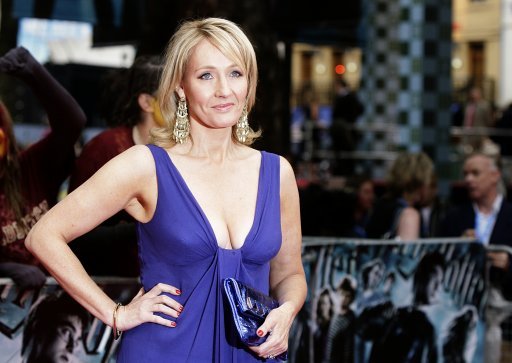
JK Rowling caused quite a stir when she published her latest book under the name Robert Galbraith.
It was quite a feat, to get great reviews for The Cuckoo’s Calling, proving to herself that she could be popular without using her famous name.
The Harry Potter author, of course, will automatically sell many books on the strength of her name, and for the many who love Harry, anything with JK Rowling on it is an instant hit.
As soon as expert Professor Peter Millican worked out that Mr Galbraith was actually Miss Rowling, sales of the new detective novel went through the roof.
But Joanne Rowling is far from the first writer to put out a book under a nom de plume.
Some have done it, like she did, as an experiment but, for others, it was essential.
In the 1800s, Mary Ann Evans had to keep quiet about a lot of things.
Born in Nuneaton, Warwickshire, she was supremely intelligent in a wide variety of areas.
She had a first-class education because her father decided she was so ugly, no man would marry her, so she may as well spend her life learning!
Despite her brains, she lived in a time when it wasn’t the done thing to be smarter than the men, and she kept her knowledge very quiet.
She changed her name to George Eliot, so people would assume she was a he, and among her many brilliant books was Middlemarch, which some have described as the greatest novel in the English language.
The writer George Sand was actually Amantine Dupin, a French Baroness who also wrote classic books but had to hide behind a man’s name.
She was also known as Jules at one time, smoked cigars and took to dressing like a man!
Charlotte Bronte wrote Jane Eyre under the name Currer Bell, sister Anne penned her books as Acton Bell, while Emily wrote her classics as Ellis Bell.
It would sound strange to say Nineteen Eighty Four was written by Eric Arthur Blair, but that was George Orwell’s real name.
He chose Orwell from his beloved River Orwell in East Anglia, and would say he hated the Blair name.
Stephen King, who has sold a few books in his time, adopted the name Richard Bachman to let him write constantly.
He often moaned that publishers held him back, and he could be publishing far more books.
If he had a pen name to hide his identity, he could do it.
Sadly, they soon found out who Mr Bachman really was, and he had to give up.
Sound a bit like a certain Harry Potter author?
JK Rowling, of course, famously only added the “K” because it was thought it would hide the fact she was a female writer, which could affect sales in the first place.
Joanne Rowling never had a middle name, but it seems that with some people, you can call yourself whatever you like, and your books will still fly off the shelves.
Our favourite nom de plume, however, is the author of Vanity Fair, William Makepeace Thackeray, an English author who seemingly loved the fun of making up odd names for himself.
Among them were George Savage
Fitz-Boodle, Michael Angelo Titmarsh, Theophile Wagstaff and C J Yellowplush, Esq.
Those make Joanne Rowling’s choice of plain old “Robert Galbraith” seem very ordinary indeed!

Enjoy the convenience of having The Sunday Post delivered as a digital ePaper straight to your smartphone, tablet or computer.
Subscribe for only £5.49 a month and enjoy all the benefits of the printed paper as a digital replica.
Subscribe